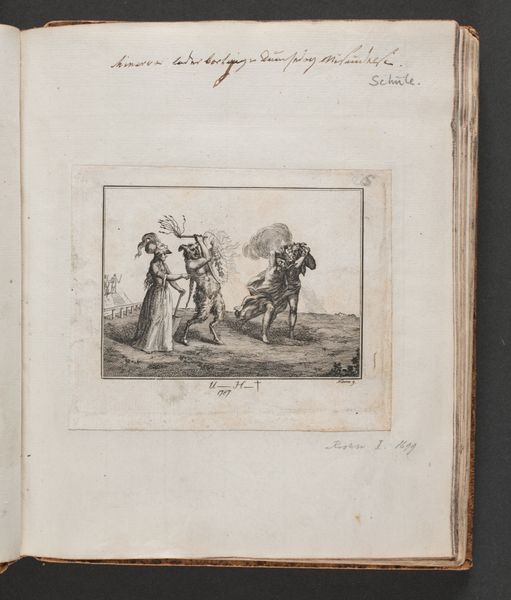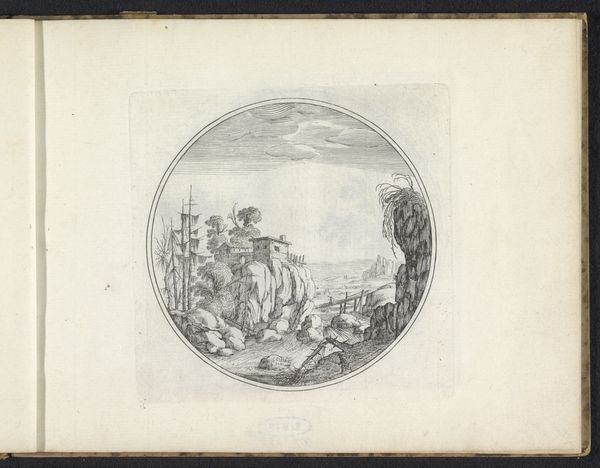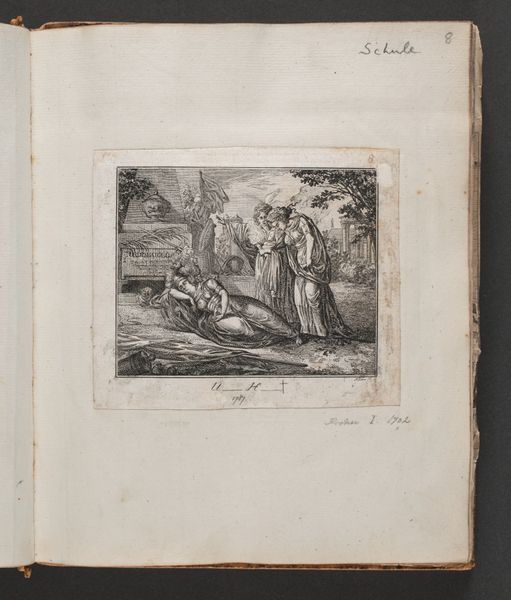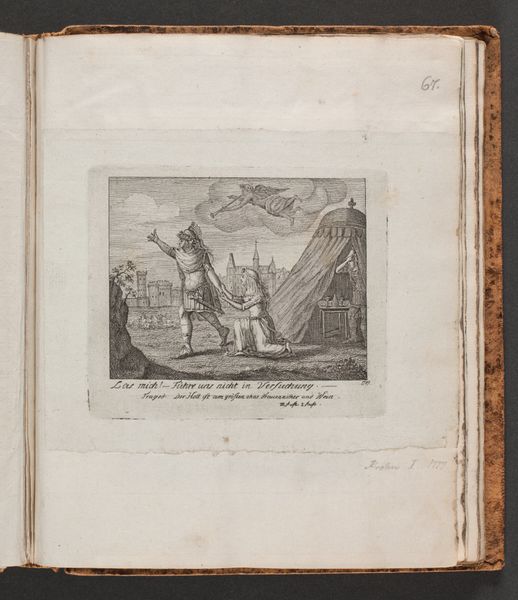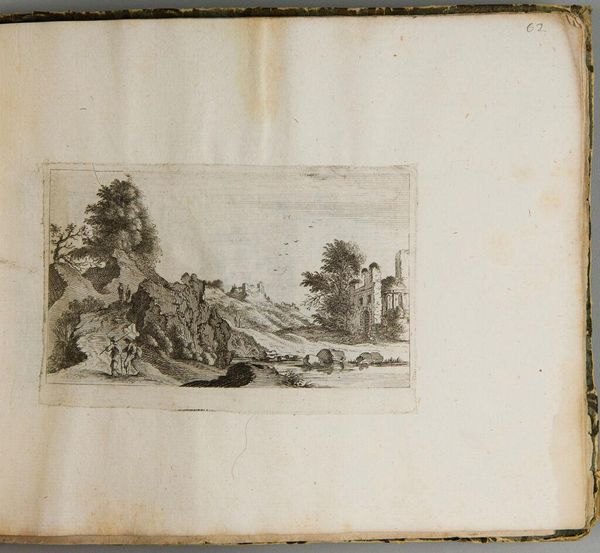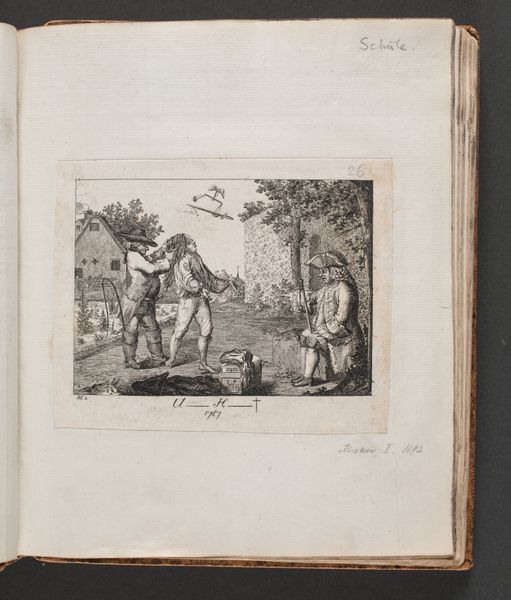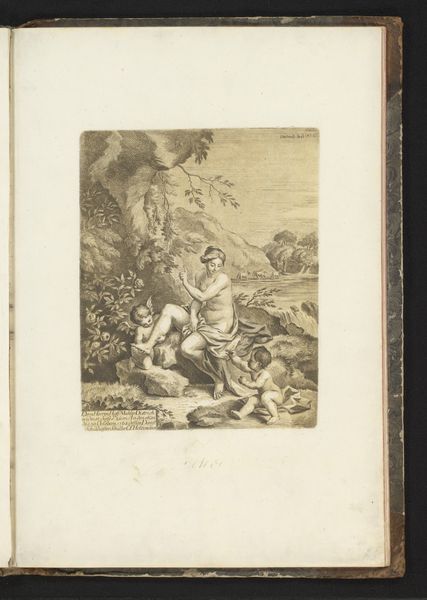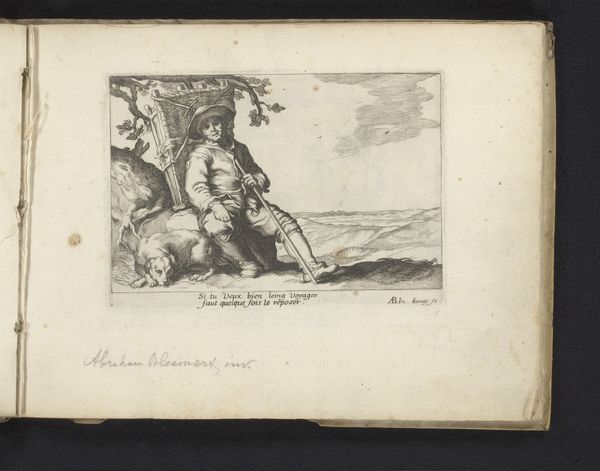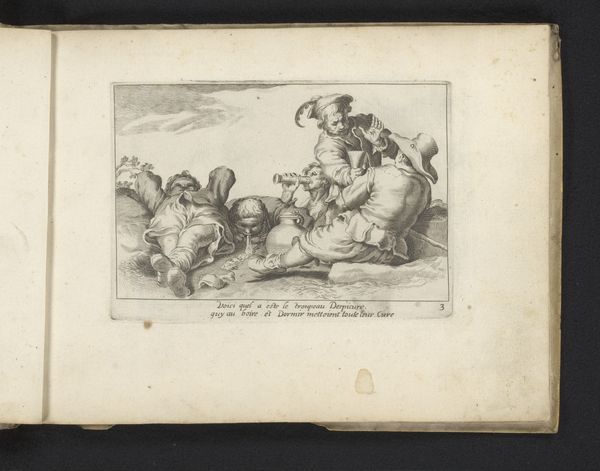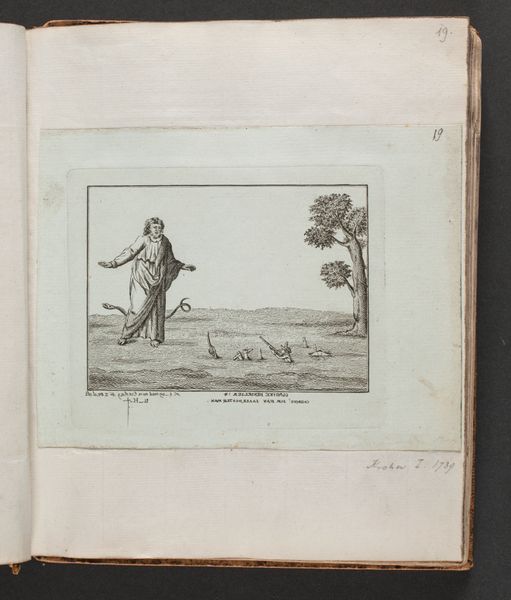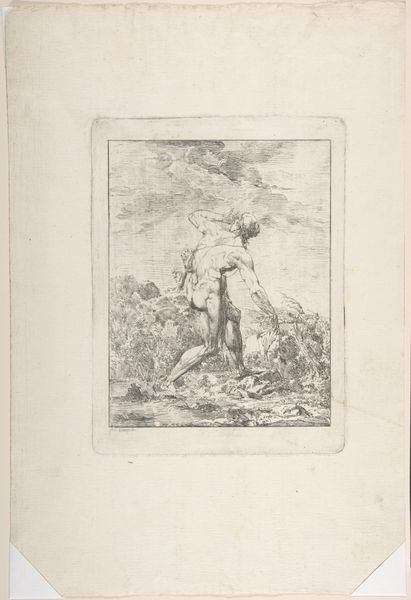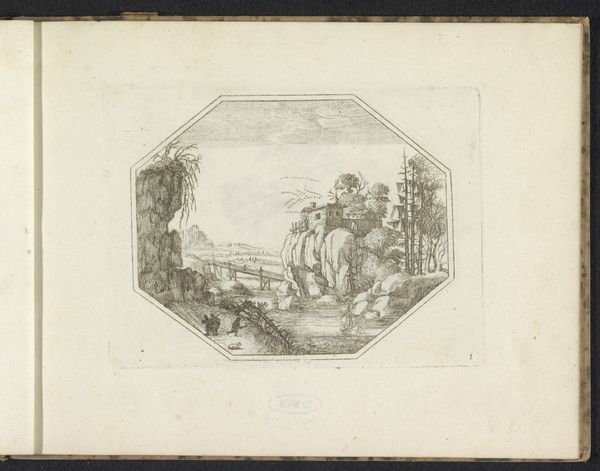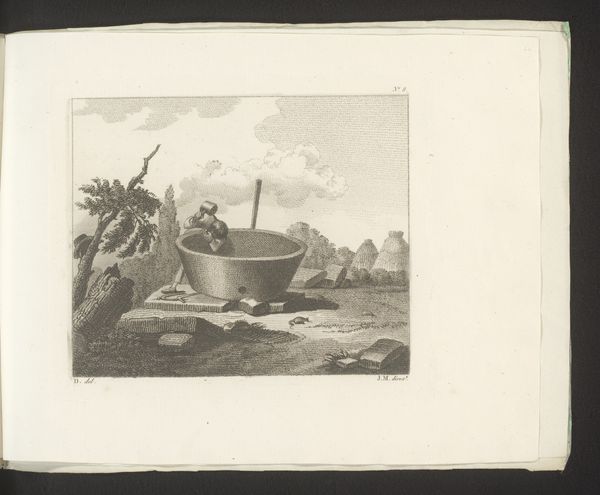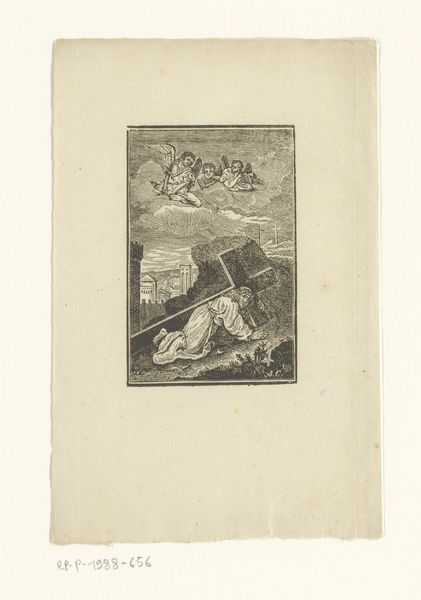
Dimensions: 102 mm (height) x 123 mm (width) (bladmaal)
This etching, "U(llykkelig) H(ændelse)" Nr. 11, was made around 1791 by Georg Christian Schule. The artist, working in Denmark, presents a scene laden with symbolic meaning. Consider the visual codes at play: a grieving woman kneels before a tomb, while an old man walks away, his back turned to her sorrow. Above the tomb, scales and what may be a pair of shoes hang precariously. The scales perhaps symbolizing justice or balance, the shoes representing a journey or path through life. In late 18th-century Denmark, such imagery would resonate with notions of mortality, loss, and the balance between earthly suffering and divine justice. Whether Schule’s piece self-consciously critiques the social structures of its time is uncertain; however, the work can also be understood through the lens of institutional history; specifically, the state-supported art academy which shaped artistic production at this time. To understand Schule’s intent more fully, we might turn to period writings on funerary practices and religious beliefs. The meaning of art is always contingent on its social and institutional context.
Comments
No comments
Be the first to comment and join the conversation on the ultimate creative platform.
